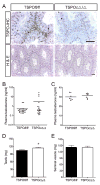A brief history of the search for the protein(s) involved in the acute regulation of steroidogenesis
- PMID: 27484452
- PMCID: PMC5929480
- DOI: 10.1016/j.mce.2016.07.036
A brief history of the search for the protein(s) involved in the acute regulation of steroidogenesis
Abstract
The synthesis of steroid hormones occurs in specific cells and tissues in the body in response to trophic hormones and other signals. In order to synthesize steroids de novo, cholesterol, the precursor of all steroid hormones, must be mobilized from cellular stores to the inner mitochondrial membrane (IMM) to be converted into the first steroid formed, pregnenolone. This delivery of cholesterol to the IMM is the rate-limiting step in this process, and has long been known to require the rapid synthesis of a new protein(s) in response to stimulation. Although several possibilities for this protein have arisen over the past few decades, most of the recent attention to fill this role has centered on the candidacies of the proteins the Translocator Protein (TSPO) and the Steroidogenic Acute Regulatory Protein (StAR). In this review, the process of regulating steroidogenesis is briefly described, the characteristics of the candidate proteins and the data supporting their candidacies summarized, and some recent findings that propose a serious challenge for the role of TSPO in this process are discussed.
Keywords: Conditional knockout; Global knockout; Mitochondria; Steroidogenesis; Steroidogenic Acute Regulatory Protein (StAR); Translocator Protein (TSPO).
Copyright © 2016 Elsevier Ireland Ltd. All rights reserved.
Figures






References
-
- Aghazadeh Y, Zirkin BR, Papadopoulos V. Pharmacological regulation of the cholesterol transport machinery in steroidogenic cells of the testis. Vitam Horm. 2015;98:189–227. - PubMed
-
- Alberta JA, Epstein LF, Pon LA, Orme-Johnson NR. Mitochondrial localization of a phosphoprotein that rapidly accumulates in adrenal cortex cells exposed to adrenocorticotropic hormone or to cAMP. J Biol Chem. 1989;264:2368–2372. - PubMed
-
- Anuka E, Gal M, Stocco DM, Orly J. Expression and roles of steroidogenic acute regulatory (StAR) protein in ‘non-classical’, extra-adrenal and extra-gonadal cells and tissues. Mol Cell Endocrinol. 2013;371:47–61. - PubMed
-
- Arakane F, Sugawara T, Nishino H, Liu Z, Holt JA, Pain D, Stocco DM, Miller WL, Strauss JF., 3rd Steroidogenic acute regulatory protein (StAR) retains activity in the absence of its mitochondrial import sequence: implications for the mechanism of StAR action. Proc Natl Acad Sci U S A. 1996;93:13731–13736. - PMC - PubMed
-
- Arensburg J, Payne AH, Orly J. Expression of steroidogenic genes in maternal and extraembryonic cells during early pregnancy in mice. Endocrinology. 1999;140:5220–5232. - PubMed
Publication types
MeSH terms
Substances
Grants and funding
LinkOut - more resources
Full Text Sources
Other Literature Sources
Miscellaneous

